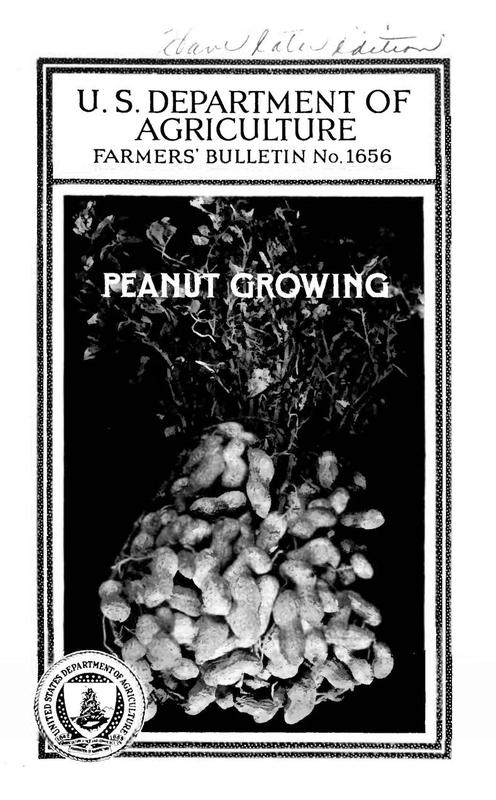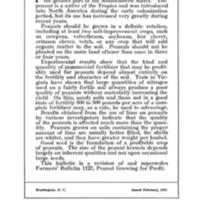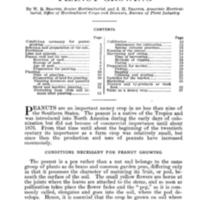Peanut Growing
Creator
Date
1931
Excerpt
PEANUTS are an important farm crop throughout the greater part of the Southeastern States. The peanut is a native of the Tropics and was introduced into North America during the early colonization period, but its use has increased very greatly during recent years. Peanuts should be grown in a definite rotation, including at least two soil-improvement crops, such as cowpeas, velvetbeans, soybeans, bur clover, crimson clover, vetch, or any crop that will add organic matter to the soil. Peanuts should not be planted on the same land oftener than once in three or four years. Experimental results show that the kind and quantity of commercial fertilizer that may be profitably used for peanuts depend almost entirely on the fertility and character of the soil. Tests in Virginia have shown that large quantities of nitrogen used on a fairly fertile soil always produce a poor quality of peanuts without materially increasing the yield. On thin, sandy soils and those not in a good state of fertility 300 to 500 pounds per acre of a complete fertilizer may, as a rule, be used to advantage. Results obtained from the use of lime on peanuts by various investigators indicate that the quality of the peanuts is affected much more than the quantity. Peanuts grown on soils containing the proper amount of lime are usually better filled, the shells are whiter, and they have greater weight per bushel. Good seed is the foundation of a profitable crop of peanuts. The size of the peanut kernels depends largely on inherent qualities and not upon occasional large seeds. This bulletin is a revision of and supersedes Farmers' Bulletin 1127, Peanut Growing for Profit.
Title
Peanut Growing
File(s)
Peanut Growing Cover.jpg
(image/jpeg)
Peanut Growing Summary.jpg
(image/jpeg)
Peanut Growing TOC.jpg
(image/jpeg)
 An official website of the United States government.
An official website of the United States government.




